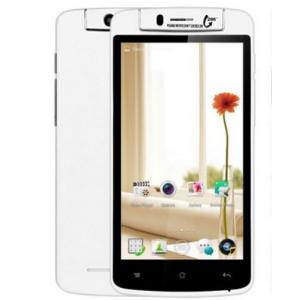Flash firmware on LKD F1 Mini
Mobiles >> LKD >> LKD F1 Mini| Specifications | Reviews | Secret codes |
| Unlock phone | Root phone |
| Backup | Flash Firmware | Screenshot |
How to flash LKD F1 Mini?
Why reinstall the firmware?
Errors start to appear in the operating system.
Some installed applications stop opening.
Many programs from the Play Market do not start.
The phone shuts down and restarts for no apparent reason.
The phone began to work slowly.
The OS does not match the system requirements of the smartphone.
Where can I find the firmware?
On the phone manufacturer's website.
On specialized services on which developers lay out custom or official OS.
What should be done before installing the firmware?
Back up your contacts and user data and transfer it to another medium.
Insert your SD card into your phone. It must have enough memory to fit the firmware.
Find information about your smartphone model.
Fully charge your phone. If the battery runs out during boot, the device will no longer turn on.
Download the archive with Firmware and place it on the SD card.
Installing TWRP Recovery
Download the Official TWRP App to your phone from the Play Market. And install this app.
When you start the application for the first time, you must agree to install a new firmware and all the risks associated with this, as well as agree to grant the application Superuser rights and click the 'OK' button.
Going to the next screen, select the item 'TWRP FLASH' and provide the application with root-rights.

On the main screen of the application, select 'Select Device', and find your phone model.
After selecting a device, the program redirects the user to a web page to download the corresponding image file of the modified recovery environment. Download the suggested *.img file.
When the file is loaded, return to the main screen of the Official TWRP App and press the 'Select a file to flash' button. Select the file downloaded in the previous step.
After adding the image file to the program, click the 'FLASH TO RECOVERY' button and confirm your choice, click 'OK'.
When the message 'Flash Completed Succsessfuly!' appears on the screen. Click the 'OK' button. The TWRP installation procedure is now complete.
Write the firmware and other necessary files to the SD card. Using a PC or laptop card reader, it will be much faster.
Insert a memory card into the phone.
To reboot into recovery, you need to use a special item in the Official TWRP App menu, accessible by pressing the button with three stripes in the upper left corner of the main screen of the application. We open the menu, select the 'Reboot' item, and then click on the 'REBOOT RECOVERY' button. The phone will reboot into the recovery environment automatically.
Firmware via TWRP

Before flashing, it is recommended to clear the 'Cache' and 'Data' sections. This will delete all user data from the device, but avoid a wide range of software errors and other problems. You must press 'WIPE' on the main screen.
Now you can start flashing. Click the 'Install' button.

The file selection screen appears. At the very top there is a 'Storage' button for selecting an SD card.
Select the location where you copied the files. Press the 'OK' button.

Find the file we need and click on it. A screen opens with a warning about possible negative consequences, as well as the item 'Zip signature verification'. This item should be checked by placing a cross in the check-box, which will avoid using damaged files when writing to the phone's memory sections.
The procedure for writing files to the phone's memory will begin, accompanied by logging and filling in the progress bar.
The completion of the firmware installation procedure is indicated by the inscription 'Successful'.
Summary: Brand & Model: LKD F1 Mini; Product Release Date: 21 June, 2014; Display Type: IPS Display, Capacitive Touchscreen; Display Size: 5.0 inch qHD; Resolution: 960 x 540 Pixels; Multitouch Input: Yes; Display Colors: 16M Color; Pixel Density (In PPI): 220.29 ppi Pixel Density; Touch Screen: Capacitive Touchscreen; Display Protection: Not Included; Features: 5-point CapacitiveMultitouch Display220.29-PPI qHD IPS display; Secondary Display: Not Support; Camera Type: Single Camera (one Back); Rear Camera: 13 Megapixel with AF, LED falsh; Image Dimensions: 4160 x 3120 Pixels; Primary Camera Features: LED FlashAuto-focusingGeo-taggingPanoramaHDRTouch Focus; Flash Type: LED Flash; ...
Comments, questions and answers on the flash firmware LKD F1 Mini
Ask a question about LKD F1 Mini




